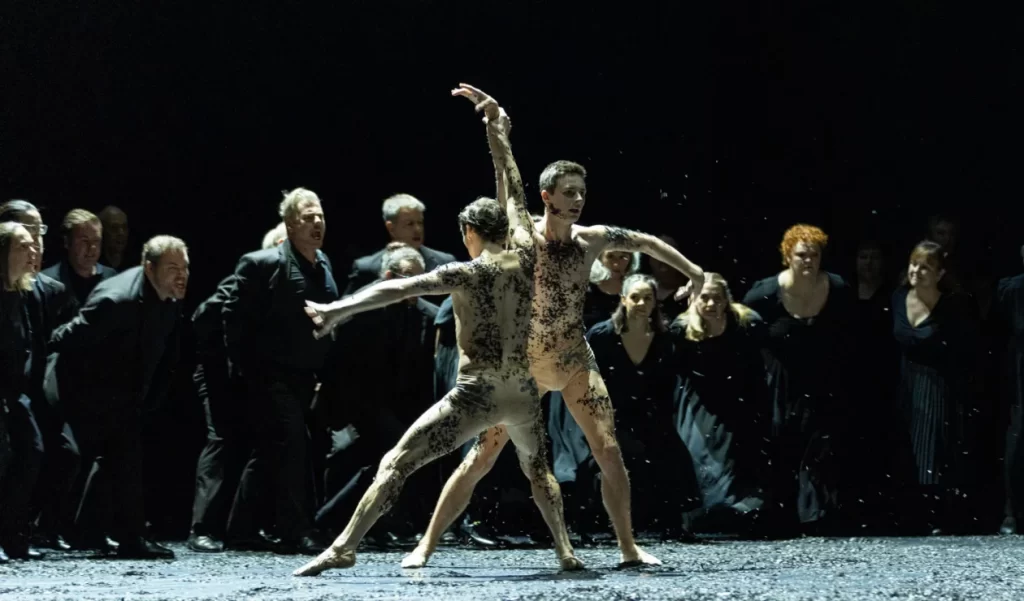Messa da Requiem

The Adelaide Festival once more presented a collaboration between the best of Adelaide’s musicians and singers, with an inspiring major company from Europe, working to produce memorable theatre. As such they brought a new awareness and appreciation of music which has long been loved.
As a major work, Verdi’s Messa da Requiem stands alone, yet may also lend itself to a response expressed in dance. This concept has been developed by choreographer and producer, Christian Spuck. A chorus of eighty singers, four soloists, and the Adelaide Symphony Orchestra performed the music as thirty two dancers from Ballett Zűrich, with grace, agility and spirit, gave physical shape to Verdi’s music and Latin texts.
Verdi’s Requiem has often been described as an opera with a religious name. But from the relatively subdued beginning, through the tumultuous fury of the Dies Irae heralded by a solo trumpet as though announcing the day of Final Judgement, to the final choral fugue which repeats the Requiem Aeternam, the text and the purpose of this work is clearly liturgical, in fact a memorial to Verdi’s friend, the author Manzoni.
As a monumental composition, which lasts for ninety minutes, it demands much from the orchestra, chorus and soloists and dancers. In last night’s performance the chorus proved well up to the task, particularly as they were also involved in movement, augmenting that of the dancers. Praise must also be given to the Adelaide Symphony Orchestra, conducted by Johannes Fritzsch.
Soprano Eleanor Lyons, Mezzo Soprano, Caitlin Hulcup, Tenor, Paul O’Neill and Bass, Pelham Andrews, as soloists, featured prominently and their dominance might give the impression of the work being operatic. Much of the emotion, found in the texts, is expressed through them, singly, or combining with each other, and with the choir. The Agnus Dei, sung by Caitlin Hulcup together with the chorus was especially moving, as was Libera Me, sung by Eleanor Lyons and the chorus.
The dancers play an integral part in this production, reflecting in physical form those same emotions. As the opening notes began on the dimly lit stage, two dancers seemed to encapsulate the idea of death and life, the tension at that final moment, suggesting the shadow of the Valley of Death. During the Dies Irae a figure writhing on the floor alone, suffering the torments of hell, while the chorus, in a semicircle sing of the day of wrath which is to come, brings thoughts of Dante’s Inferno or Michelangelo’s frescoes.
Yet later, as the tenor, Paul O’Neill, sings ‘Grant me a place among the sheep and take me from among the goats, setting me on the right side’ in his solo Ingemisco, hope of final redemption is given to the departed.
The staging, lighting, and costumes, sombre and funereal, are totally in keeping with a production that explores the value of life and the inevitability of death.
Music by Giuseppe Verdi
Wed 8-Sat11March 2023 Festival Theatre.
